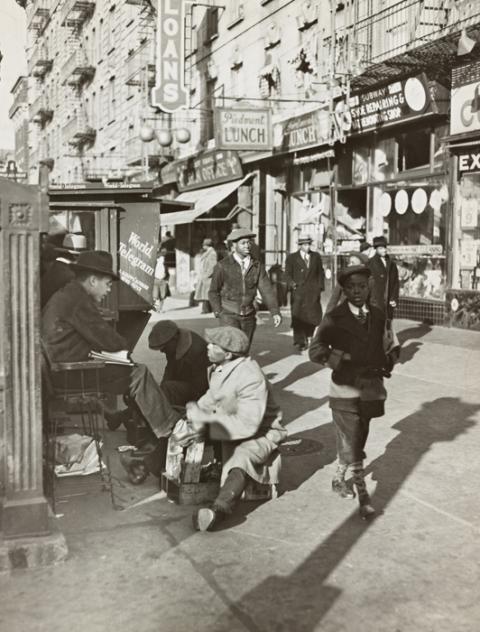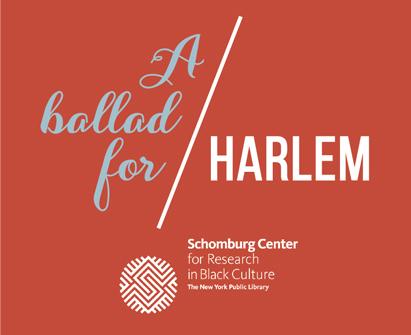A glimpse of Harlem's past,
a light or Harlem's future
Often called the Black Mecca, Harlem has long provided the most visible example of Black placemaking in the 20th and 21st centuries, marked by ebbs and flows of unrest and genius, dreams realized and dreams deferred. In this exhibition of recent key acquisitions and specific collection highlights related to the Schomburg Center's broader Home to Harlem initiative, we examine several strands of the wide world that is Harlem. Foundational figures like Langston Hughes serve as a guide across the century that the Schomburg Center has borne witness to Harlem's changing same.
Harlem has not only inspired artistic, musical, and literary outpouring known as the Harlem Renaissance, it also inspired everyday dreams, including that of the founding of the Schomburg Center for Research in Black Culture in 1925, then named the Negro Division of Literature, History, and Prints of the New York Public Library. Harlem Renaissance writer Arna Bontemps wrote, ''In some place the autumn of 1924 may have been an unremarkable season. In Harlem it was like a foretaste of paradise." This paradise is both a place and an idea, one that Harlem still embodies. Kathy Smith, a Harlem resident recently proclaimed in the New York Times, ''You feel like you can get an here in the world from Harlem." Home to a global Black community, Harlem still shines as a beacon for many seeking the pulse of Black America.
More recently, gentrification has served to challenge the fabric of Black communities, causing displacement, loss of traditions, and removal of certain landmarks, while residents' spirits are imbued with resilience and the fortitude of their predecessors. This exhibition revisits places, people, and moments known and still underrepresented in the historical telling of Harlem, from our neighbor the Harlem YMCA to Harlem's own jazz colossus Sonny Rollins and tennis great Althea Gibson. If Harlem is to be transformed, let it be in the likeness of past residents and institutions committed to community, innovation, education, fervent political engagement, cultural affirmation, global perspective, and creativity.
This exhibition took place at the Schomburg Center in the Main Exhibition Gallery in 2019.





